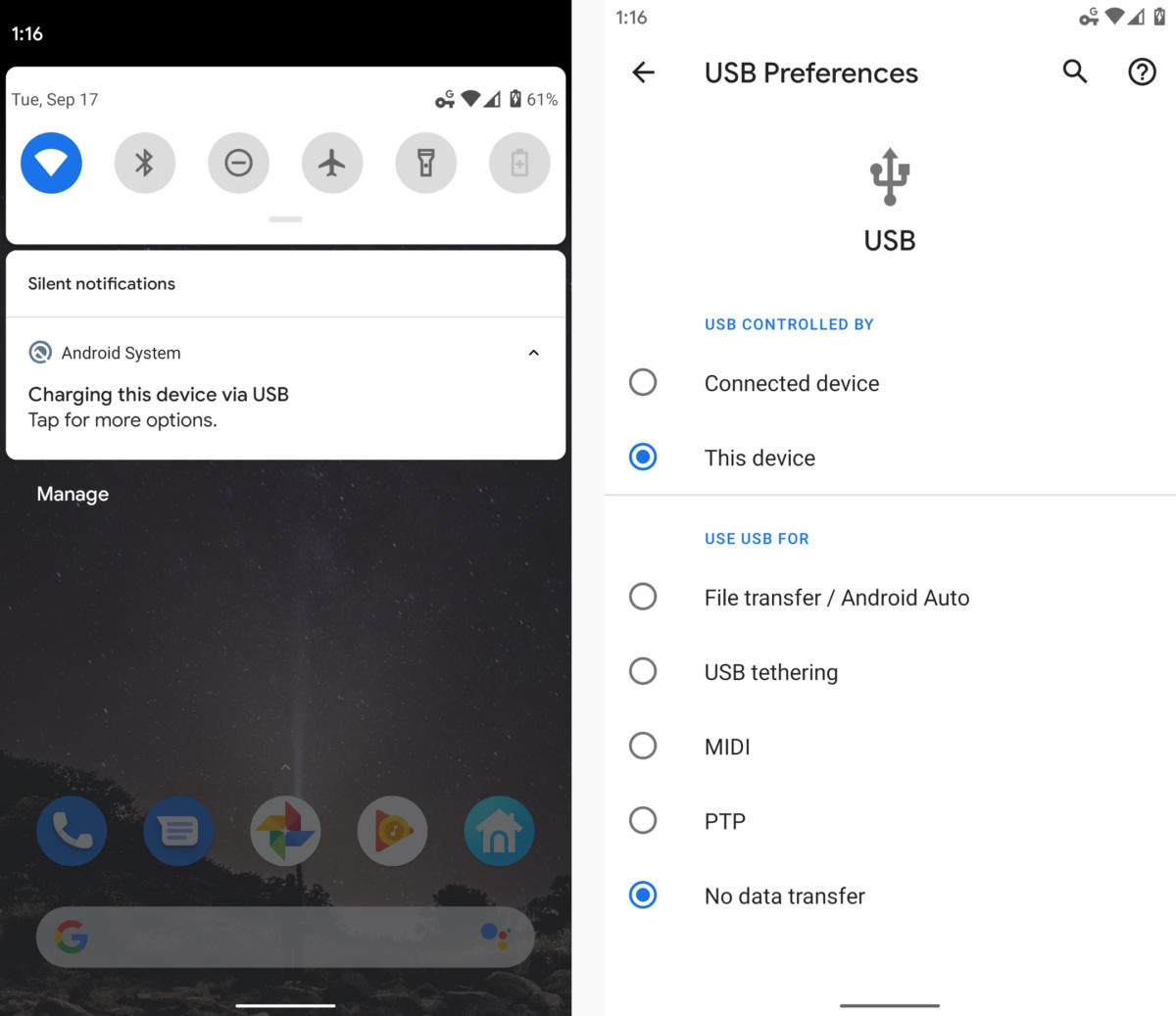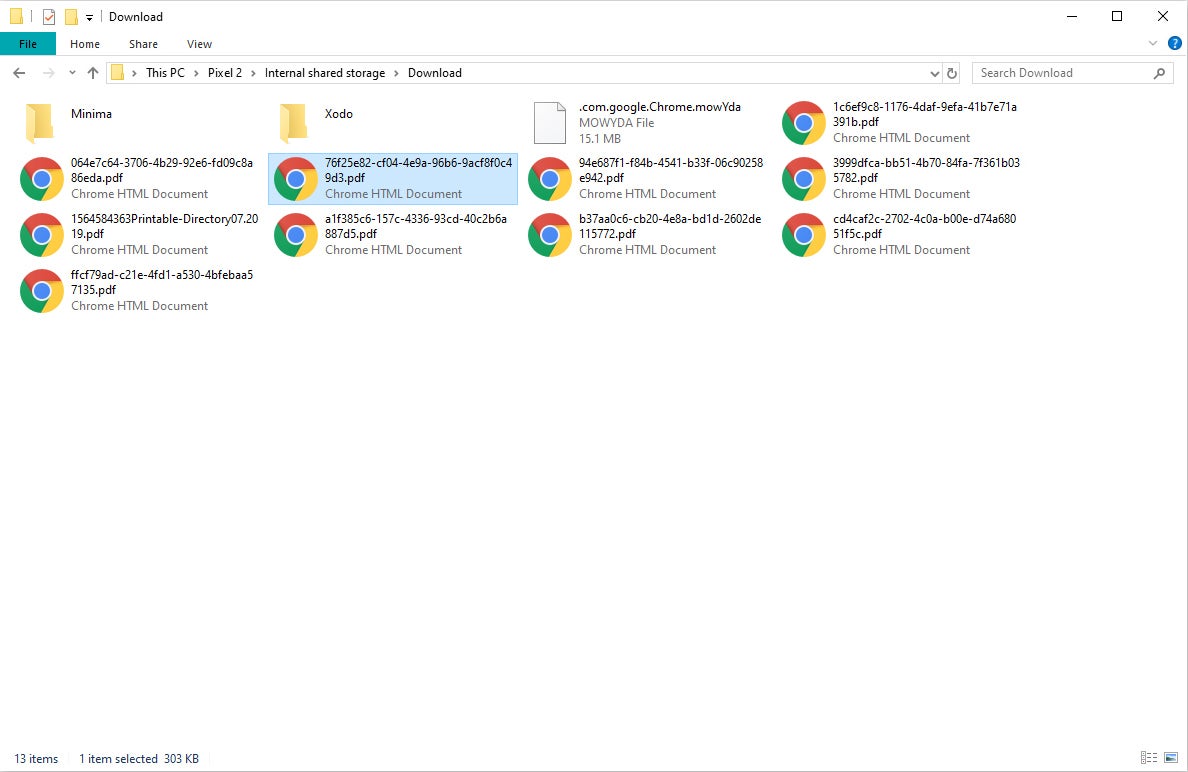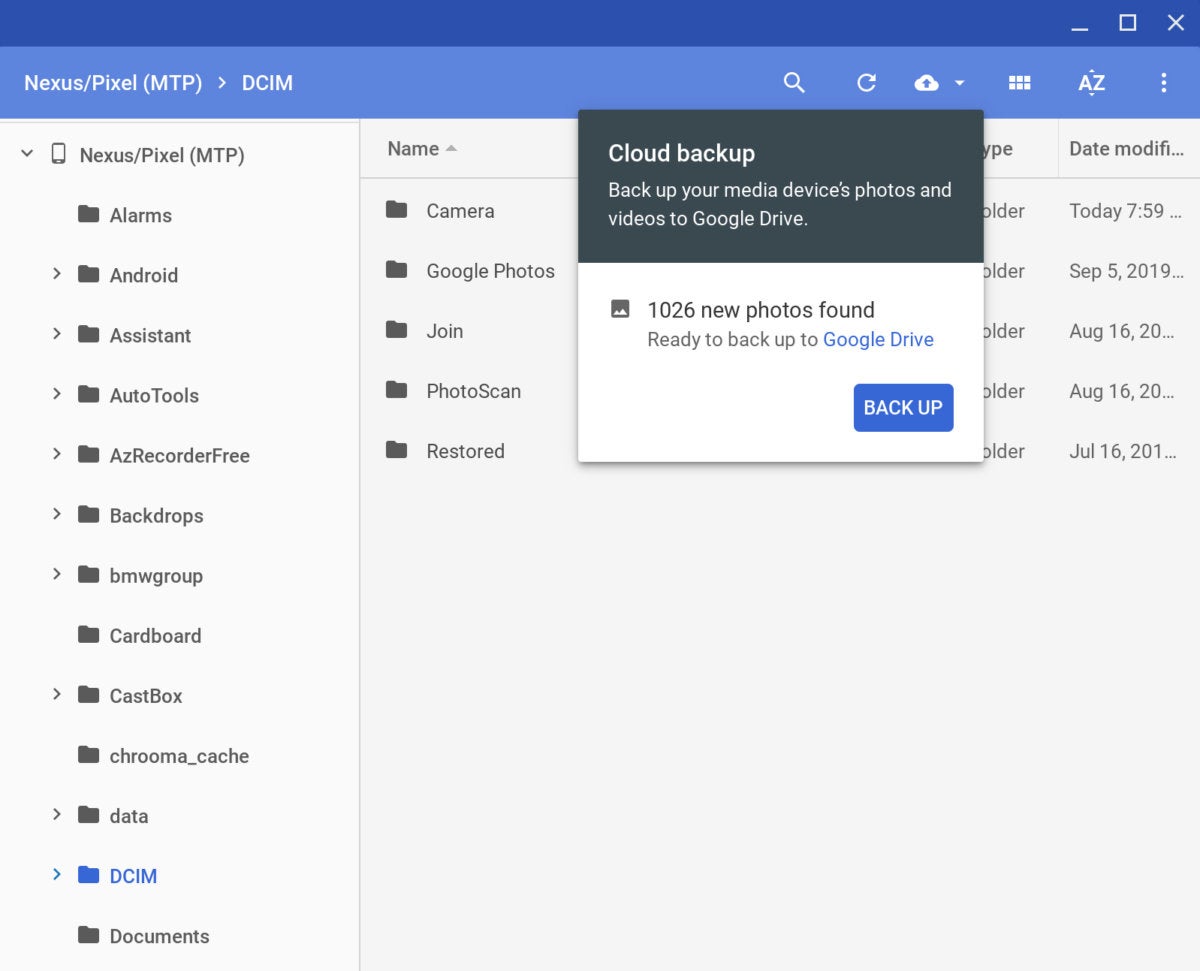What Process Would You Follow To Locate Items That You Recently Downloaded On A Mac Computer?
Android file transfer: How to move data between your phone and reckoner
Moving files between your Android device and a Windows PC, Mac, or Chromebook doesn't have to be difficult — or dependent on any cloud services.
- Android file transfers for Windows computers
- Android file transfers for Mac computers
- Android file transfers for Chrome OS computers
- Don't like cables?
Testify More
Your smartphone is a powerful reckoner in your pocket — and with Android, part of that PC-like musculus ways being able to plug your phone into whatever Windows, Mac, or Chrome OS system so elevate and drop files either way.
Different iPhones, Android devices allow you to access their file systems directly from a desktop, without the need for whatsoever cumbersome interfaces or complicated procedures. In fact, transferring files to or from an Android device is basically no different than plugging an external difficult drive into your computer and moving data to or from it.
All you lot need is your phone, your computer, and a cable to connect 'em — with micro-USB or USB-C on the phone side and USB-A or USB-C on the computer side, depending on the specifics of your devices. (Most current Android phones employ USB-C, whereas nearly pre-2016 devices have the older micro-USB standard. USB-A, meanwhile, is the traditional connector port yous're used to seeing on computers, though more than and more than models now also offer USB-C.) At that place's a decent chance that the same cable that connects your phone to its wall charger will work.
Got information technology? Good. Hither's what you need to practice next, depending on whether you accept a Windows, macOS, or Chrome OS system:
Android file transfers for Windows computers
With Windows, things are as simple as tin be. Just plug your phone into any open USB port on the estimator, then turn on your phone's screen and unlock the device.
Swipe your finger down from the acme of the screen, and you should meet a notification about the current USB connectedness. At this point, it'll probably tell y'all your telephone is connected only for charging.
 JR Raphael/IDG
JR Raphael/IDG After yous connect your telephone to your computer, a notification will allow you fix information technology for transferring files.
Tap the notification and select "Transfer files" or "File transfer" in the bill of fare that appears. If media files are all you're planning to move, you could as well use the "Transfer photos" (sometimes listed as "PTP") option, which'll treat your phone like a digital camera. Once you've made your selection, become to your desktop and open up a File Explorer window using the method that makes the most sense for your Windows configuration:
- Click the File Explorer icon in your taskbar
- Open the Offset menu and click This PC or Calculator
- Click the This PC, Estimator, or My Computer icon on your desktop
Then expect for an icon representing your telephone alongside other portable devices and drives. Click or double-click that icon, and ta-da! You're staring at your Android phone's internal storage. You can now click effectually and browse folders, elevate and drop files between your telephone and PC, or manipulate the data in any style you want.
 JR Raphael/IDG
JR Raphael/IDG Your Android phone'due south storage looks similar any regular hard drive when viewed from a computer.
Android file transfers for Mac computers
Got a Mac? The Android file transfer process is a flake more complicated for you — but fear not, for information technology's yet pretty darn easy.
The main difference is that before things volition work, y'all'll need to download and install an official Google program called Android File Transfer. To utilise the program, your Mac must be running macOS 10.7 or afterwards, and your Android device must have Android 3.0 or later on — something that should pretty much be a given with any reasonably recent Android product.
Once the program's in place on your Mac, just plug your telephone into your computer, plow on your phone's screen and unlock the device, and then look for the aforementioned USB status notification described above.
Tap the notification and select "Transfer files" or "File transfer." The Android File Transfer program should then automatically open on your Mac, and you should be able to browse your phone'southward storage and transfer files to your heart's content.
If the official Android File Transfer plan doesn't work well for you — a vexingly mutual complaint among Mac users these days — consider the favorably reviewed third-party Commander One Pro every bit an alternative. Information technology costs $30 for a single license, $100 for a five-user team license, or $150 for a 50-user company license.
Or — well, skip downwardly to the terminal section of this story for one other selection.
Android file transfers for Chrome Os computers
You'd expect file transfers betwixt Android phones and Chromebooks to be equally simple equally can be, because that Google'south the driving forcefulness behind both of those operating systems — and past golly, yous'd exist absolutely right.
But like on a Windows system, all you've gotta do to connect your Android phone to a Chromebook is plug it into any open up USB port, so tap the USB charging notification on the telephone and select either "Transfer files" or "File transfer" from the prompt that appears — or select "Transfer photos" or "PTP" if you desire your phone to be treated like a camera, with a focus exclusively on multimedia files.
In one case yous do that, the Chrome OS Files app should automatically appear on your Chromebook with your phone present every bit ane of the storage options. The system will probably even prompt you to back upwards all of your phone's media files to Google Drive; you can allow that, if you'd like, or dismiss it and simply drag and drop files in either direction as needed.
 JR Raphael/IDG
JR Raphael/IDG Pulling up your Android phone'south storage on a Chromebook is easy every bit can be — and typically includes a one-click option to copy all your device's media files equally well.
There'southward really not much to it — nor should at that place be.
And if you want an even simpler way to take care of business organization...
Don't like cables?
Hey, wait a minute — aren't in that location apps and deject services for this sort of matter? Sure in that location are, and we've got yous covered there, too. Check out "Transferring files wirelessly between devices" in our in-depth Android file management guide for everything there is to know.
This article was initially published in August 2017 and updated in Oct 2019.
Copyright © 2019 IDG Communications, Inc.
Source: https://www.computerworld.com/article/3214452/android-file-transfer-how-to-move-data-between-your-phone-and-computer.html
Posted by: jordanwastoods82.blogspot.com





0 Response to "What Process Would You Follow To Locate Items That You Recently Downloaded On A Mac Computer?"
Post a Comment